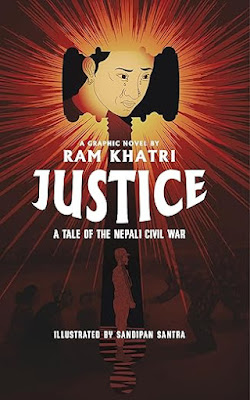The stories about civil unrest and war in far-flung places often do not enter mainstream American consciousness until too late, only after too much harm has been done. "Justice: A Tale of the Nepali Civil War" tells the story of a family broken apart by fighting between government forces and Maoist rebels in the civil war that erupted in the mid-1990s. The graphic novel is told from the point of view of Tara, the eldest daughter, who visits her childhood home years after she and her family were forced out for fear of their safety. She recalls the idyllic days tending the farm they maintained for a landlord. Kamal, an activist with the people's army, tries to convince Punya, Tara's father, to abandon farming. When he declined, stating that farming was his family's livelihood, trouble started brewing. Neighbors turned against each other. At the height of the civil war, older brother Sudeep goes missing. Tragedy after tragedy befalls the family as they try to make sense of the chaos.
Revolution has its costs. Author Ram Khatri shares the story from the perspective of ordinary people at the crossfire of dueling ideologies about how a nation – and its economy – should be run. While the narrative did not provide any details about the reasons for the war, it focused primarily on the people's experiences with it. I was impressed with the illustrations by Sadipan Santra, showing scenes of the Nepali countryside, mealtimes with family, and farming life. The colors are vibrant and attractive, reflecting the aesthetics of Nepal.
"Justice: A Tale of the Nepali Civil War" delves into cultural nuances that may not be immediately apparent to readers outside Nepal. For instance, it explores the profound guilt that Tara experiences, leading her to self-harm. This aspect of the story raises a valid point about the need for content warnings. As the graphic novel reaches a diverse global audience with varying attitudes towards mental health, it becomes crucial to consider including a trigger warning about the depiction of a suicide attempt to ensure all readers feel respected and considered.
As a Filipino-American who grew up in Manila during the Marcos regime, I am familiar with the political and economic tensions between haves and have-nots, between landowners and laborers. As told in the story, the Nepali Maoist rebellion is reminiscent of my homeland's National People's Army. All over the colonized world, change becomes necessary because the systems built upon shaky capitalist and globalist structures do not work for everyone.

